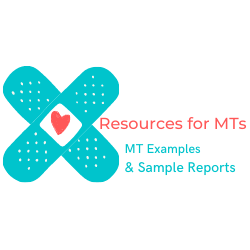DATE OF EEG: MM/DD/YYYY
REFERRING PHYSICIAN: John Doe, MD
INDICATIONS:
A patient referred for the evaluation of possible seizures.
TECHNIQUE:
The 18-channel digital video and digital EEG monitoring was performed with conventional scalp electrode placement according to the 10-20 electrode convention. The EEG was reviewed in bipolar and referential montages.
FINDINGS:
In the awake state, with the eyes closed, the dominant posterior rhythm consisted of well-formed, regular, medium amplitude 9 to 10 hertz alpha activity. This was intermixed with low amplitude beta activity diffusely. Hyperventilation was performed and resulted in some increased amplitude and slowing of EEG activity. The patient was “staring” after hyperventilation, but there were no epileptiform discharges. Intermittent photic stimulation was not performed. The entire sleep recording was scanned and reviewed. Normal features of sleep were seen including vertex sharp transients, K-complexes, and sleep spindles.
In deeper stages of sleep, higher amplitude posterior slow waves were observed. There were no interictal abnormalities. More than 30 pushbutton events were recorded. These consisted of various phenomena such as odd eye movements, staring, subjective changes, jumping episode, closing of the eyes, pressing on the eyes and eyelid blinking. In addition, the patient self-induced several of the spells, where the patient arched his back and neck and stretched his neck. None of these resulted in convulsion or loss of consciousness, but the patient said he felt dizzy.
In any case, no EEG changes of significance were seen with any of these phenomena at all. There was considerable artifact occurring with many of these phenomena.
IMPRESSION:
Abnormal prolonged video EEG monitoring for age. Normal awake and sleep features are seen. No epileptiform discharges are observed. None of the clinical events of concern were associated with EEG change of significance.
